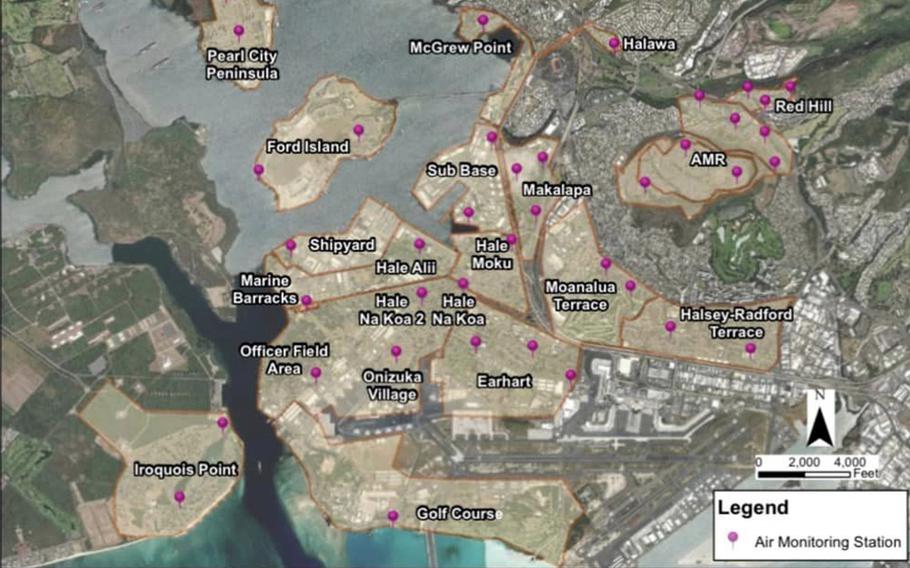
The Navy has placed 40 air-monitoring stations in areas near the Red Hill Bulk Fuel Storage Facility in Honolulu, in preparation for the site’s final defueling that begins Monday, Oct. 16, 2023. (U.S. Navy)
FORT SHAFTER, Hawaii — The Navy has installed 40 air-monitoring stations on and near Joint Base Pearl Harbor-Hickam as an “early-warning” system in the event of a spill as it empties the Red Hill fuel storage facility starting Monday.
The stations will remain in place for six months, after which the Navy will reevaluate their need, Capt. Mark Sohaney, commander of Joint Base Pearl Harbor-Hickam, wrote in a letter Tuesday to military housing residents to clarify the purpose of the stations.
Joint Task Force-Red Hill, a Defense Department entity, is handling the three-month process of emptying 104 million gallons of fuel from the World War II-era tanks.
Leakage from the tanks in 2021 contaminated one of three wells used by the Navy for distributing water to military housing communities on and adjacent to the joint base.
Late that year, residents complained about tap water smelling of petroleum, leading to thousands being temporarily relocated to area hotels as the Navy cleaned up the distribution system.
Some were sickened by exposure to the tainted water, and more than 1,000 residents and former residents have joined a federal lawsuit seeking compensation.
Defense Secretary Lloyd Austin in March 2022 ordered the facility to be emptied and permanently closed.
The idea of millions of gallons once again flowing through Red Hill pipes to awaiting tankers at the joint base has left some residents of military communities uneasy given what they believe was an inadequate response by the Navy in the initial wake of water contamination.
The installation of the stations is an application of “lessons learned from Red Hill,” according to a Navy fact sheet sent to residents.
“While air quality monitoring is not a regulator-mandated prerequisite for defueling, these stations can provide an early-warning indicator that improves response time in the unlikely event of an incident,” the fact sheet states.
“Ultimately, this reduces risk for the operators and public during Joint Task Force-Red Hill’s defueling and Navy’s closure of Red Hill,” the fact sheet states.
The stations will monitor air for volatile organic compounds, which have a high vapor pressure, such as fuel oil, gasoline and paint, Sohaney wrote in his letter.
They will also collect atmospheric data such as air speed, temperature, humidity and barometric pressure.
The site for each station was chosen based on wind, weather patterns and thorough coverage of all communities, Sohaney wrote.
“The air monitoring stations are part of the Navy’s plan to establish a baseline of current air quality conditions and will be used to identify potential future changes in air quality,” the fact sheet states.
The Navy will issue a comprehensive report on the findings of the stations at the end of six months, but data will be collected periodically during that half year and made available on jbphh-safewaters.org, he wrote.